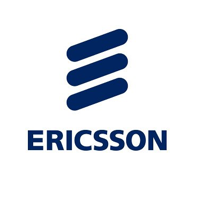LTE Ecosystem Status – March 2021
Introduction
GSA (Global mobile Suppliers Association) monitors and researches worldwide mobile broadband developments and publishes facts, statistics and trends. This report confirms that 19,422 LTE user devices have been identified as launched (including 386 commercial 5G devices also supporting LTE) from 846 manufacturers and provides an analysis of the main developments and trends.
This report covers LTE FDD and TDD (TD-LTE) models and LTE-related cellular IoT devices standardised by 3GPP as UE Cat-M1/M2 and UE Cat-NB1/NB2.
LTE user devices
While 5G grabs the headlines, LTE still dominates global mobile telecoms. There are 807 operators with commercially launched public mobile or broadband fixed-wireless access networks (GSA: NTS Database March 2021). There were 5.95 billion LTE subscriptions globally by the end of Q4 2020 (source: Omdia, March 2021). LTE accounts for 62.2% of mobile subscriptions globally. Given this huge market, it is not surprising that there is a vibrant base of technology suppliers supporting operators with LTE networks and within that, a large number of vendors selling a huge array of devices.
There are 19,422 LTE-capable user devices including frequency and operator variants from 846 suppliers verified in GSA’s GAMBoD database, an 18% increase in the number of devices since March 2020. The number of devices catalogued in the GAMBoD database has continued to grow rapidly, at an average growth rate of over 2,900 devices per year for the past four years.
Form factor
The phone form factor accounts for the largest number of identified devices with 11,173 phone models catalogued, including operator and frequency variants, giving a 57.5% share of all LTE devices. The number of LTE-capable indoor and outdoor FWA CPE stands at 661 devices, while the number of other LTE-capable CPE (including industrial/enterprise CPE, mobile hotspots and other router devices) is 3,389 devices. The LTE module and LTE-connected tablet PC segments (1,564 and 1,273 devices respectively) are also large. Other categories being tracked include USB modems (363 devices), asset trackers (243), cameras (172), notebooks (129) and smart watches (86), as well as car hotspots, vehicle on-board units (OBUs), femtocells, fixed wireless terminals/phones, data loggers/IoT sensors, drones, kiosk terminals, PC cards, POS machines, projectors, smart-home devices, vehicle accessories, intercoms, encoders and voice translators.
FDD devices
Most devices operate in the FDD mode; there are now 17,278 devices identified as supporting the LTE-FDD mode, up from 16,837 in December 2020. This is 89.0% of the 19,422 LTE-capable user devices known to GSA.
LTE networks are operating commercially in many bands. The most popular spectrum for LTE deployments is 1800 MHz and Band 3 also has the largest range of LTE-capable device models: 13,142 Band 3 user devices are announced in the market, i.e. 67.7% of LTE devices can operate using spectrum at 1800 MHz. The ranges of devices supporting 2600 MHz Band 7 and 2100 MHz Band 1 are also very strong, representing 58.3% and 57.8% of LTE devices respectively.
Table 1 confirms the frequency bands that are most supported by LTE-FDD devices.
LTE-FDD user devices of course reflect the diverse range of form factors found across LTE-capable devices generally. As above, phones make up the largest share of all LTE-FDD device types: there are 10,224 phones identified as supporting FDD bands, representing 59.2% of all LTE-FDD devices.
TDD devices
LTE Ecosystem Status – March 2021

© GSA 2021

